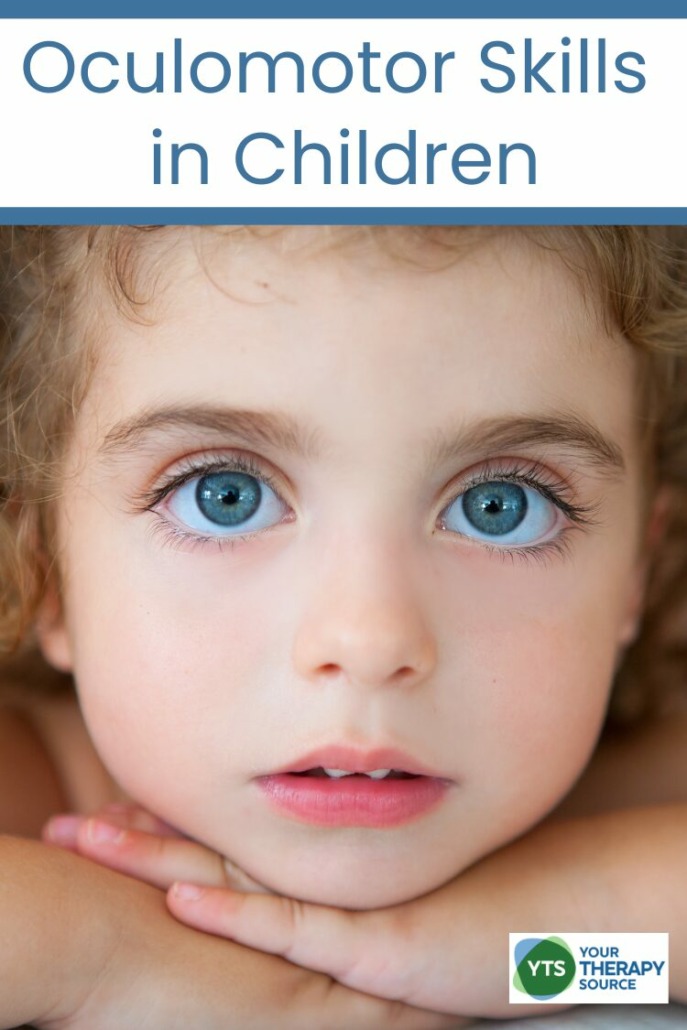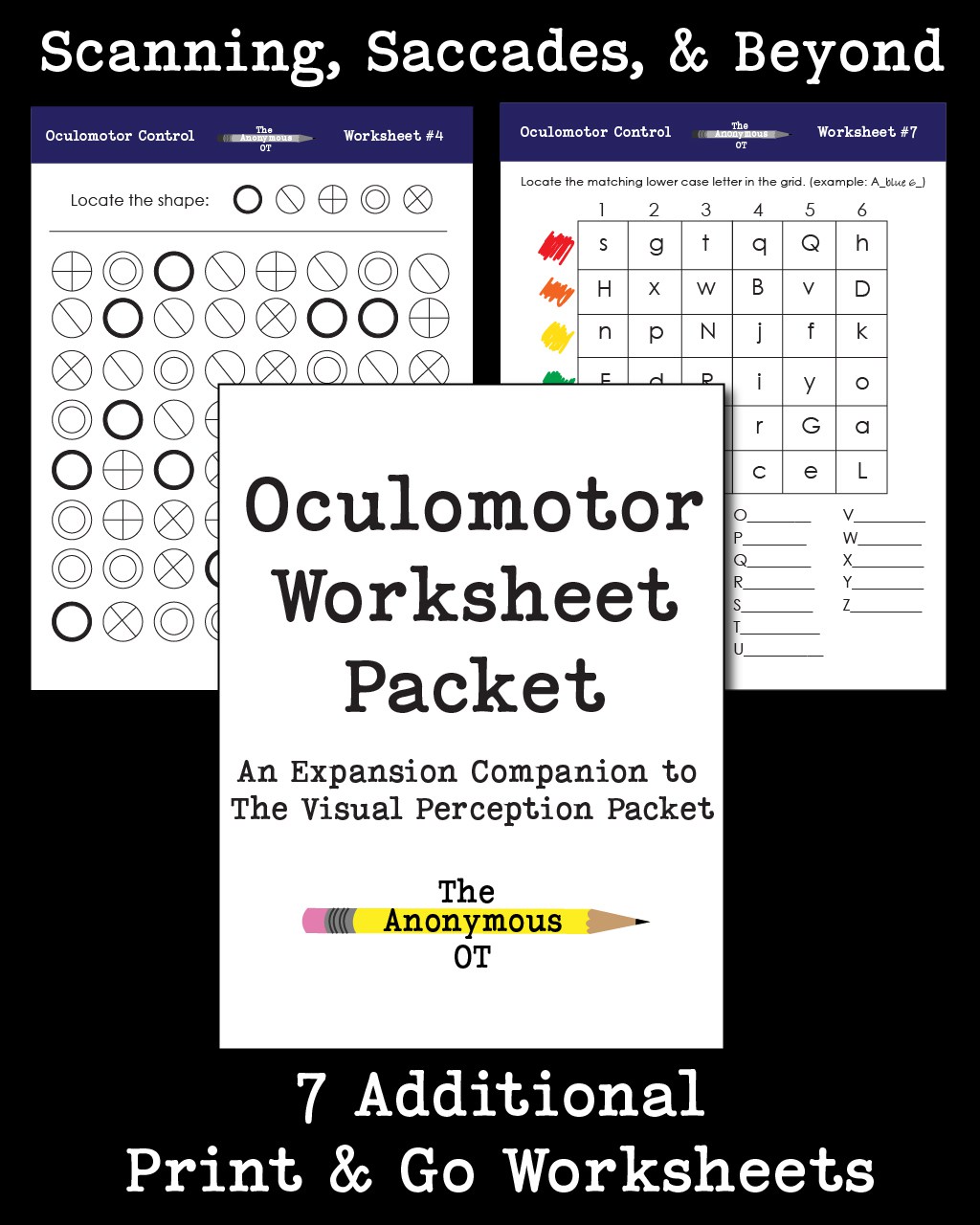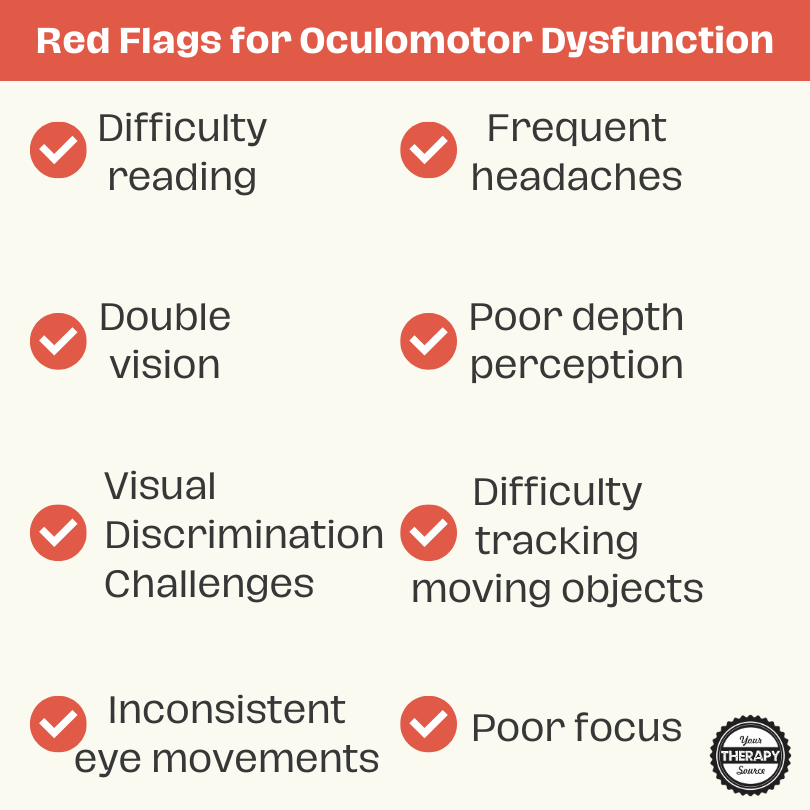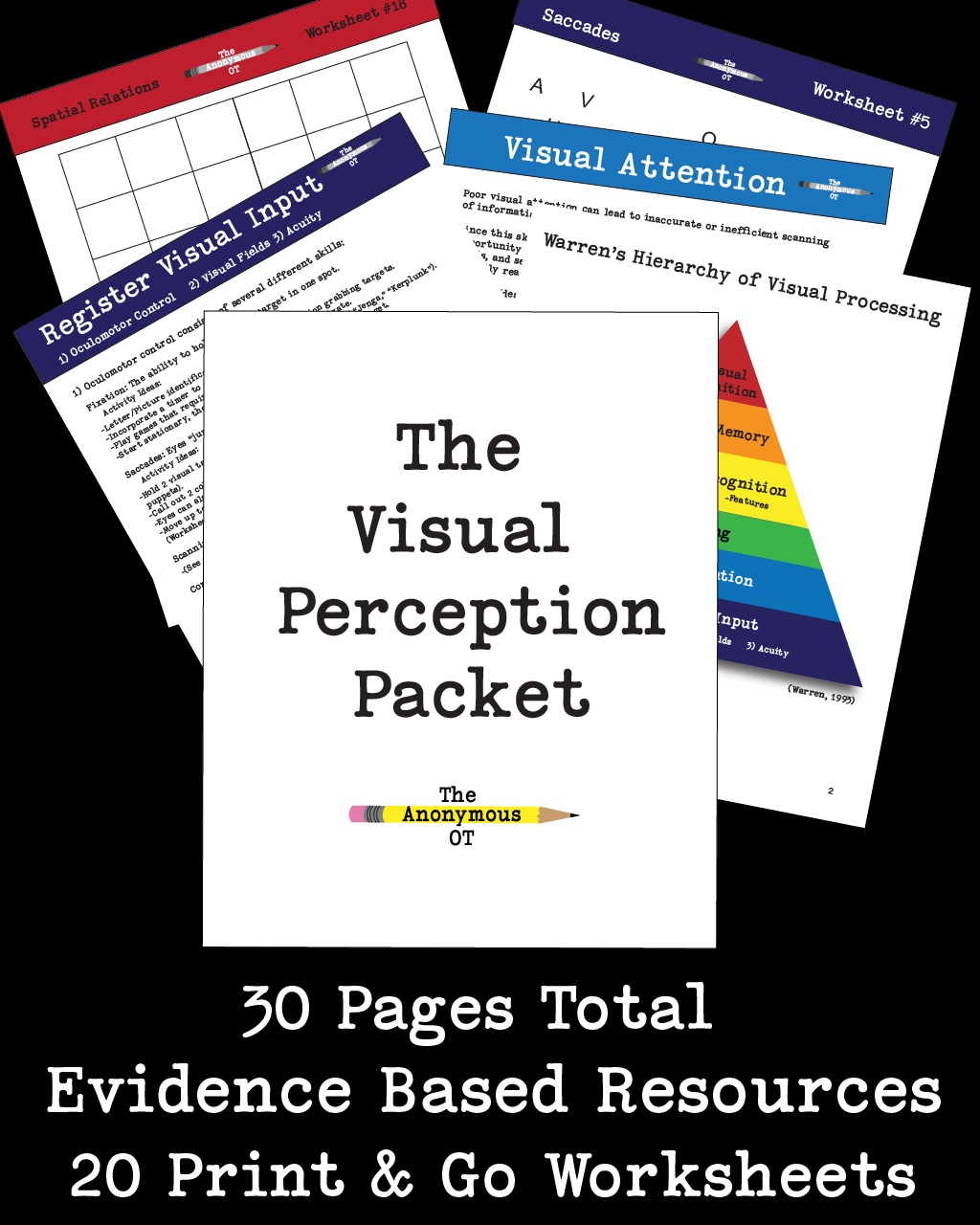Oculomotor Skills in Children

Oculomotor skills are critical to our visual system, enabling us to navigate the world with precision and ease. These skills, often overlooked, are central to performing everyday activities, from reading a book to playing a sport. Learn more about oculomotor skills, their importance, activities to enhance them in children, red flags for oculomotor dysfunction, and their intriguing relationship with dyslexia.
If you would prefer, you can listen to this blog post.
What Are Oculomotor Skills?
Oculomotor skills refer to the eye movements that allow us to track and focus on visual targets. These skills include eye movements such as:
- fixation – maintaining focus on a single point
- saccades – quick, simultaneous movements of both eyes in the same direction
- pursuits – smooth following movements
- convergence – the ability of the eyes to move together
- accurate jumps – precise movements between targets
They are fundamental for activities requiring visual attention and coordination, such as reading, writing, and hand-eye coordination.

The Oculomotor Worksheet Packet
Why Are Oculomotor Skills Important?
The significance of oculomotor skills cannot be overstated. They are crucial for effective reading, writing, and overall learning. These skills enable us to track moving targets, maintain visual focus, and make quick and accurate jumps between words and lines while reading. Moreover, they are vital for depth perception, allowing us to perceive the world in three dimensions and understand the spatial relationship between objects. Therapists, particularly occupational therapists and optometrists, emphasize the development of oculomotor skills to prevent visual strain, headaches, and fatigue, all of which can stem from poor eye movements.
10 Activities to Enhance Oculomotor Skills in Children
Developing oculomotor skills is crucial for children’s learning and daily life. Engaging in specific activities can significantly bolster their ability to track and focus visually. These activities not only make the process of enhancing these skills enjoyable but also contribute to a child’s overall cognitive and motor development. Here’s a list of activities designed to improve children’s oculomotor skills:
- Balloon Volleyball: Encourages children to track the slow-moving balloon, improving visual tracking and hand-eye coordination.
- Visual Motor Integration Exercises: Activities like drawing or tracing can enhance the coordination between visual perception and hand movement.
- Visual Figure Ground Activities: Helps children differentiate a figure from its background, improving focus and attention to detail.
- Tracking a Moving Target: Exercises like following a swinging pendulum or a rolling ball to improve smooth pursuit eye movements.
- Visual Discrimination Tasks: Games that involve finding differences or matching similar pictures to enhance the ability to notice subtle differences visually.
- Saccadic Eye Movement Exercises: Activities that involve quick eye movements from one target to another, such as switching gaze between two objects at varying distances.
- Convergence and Divergence Activities: Practices like the ‘pencil push-up’, which trains the eyes to work together and focus on a moving target.
- Memory Games: Enhances visual memory and the ability to recall and recognize visual information.
- Balance and Coordination Games: Activities that require balance while tracking or focusing visually, integrating motor and oculomotor skills.
- Depth Perception Challenges: Tasks that involve estimating distances or catching and throwing, aiding in the development of spatial awareness and depth perception.

Recognizing the Red Flags for Oculomotor Dysfunction
Identifying the early signs of oculomotor dysfunction is vital for timely and effective intervention. Children facing challenges with eye movements may struggle with various academic and everyday tasks. Being aware of these red flags can prompt necessary assessments and interventions, leading to improved outcomes. Here are some common indicators of oculomotor dysfunction:
- Difficulty Reading: Struggling to follow lines of text, losing place while reading, or frequently skipping words or lines.
- Frequent Headaches: Regular complaints of headaches, especially after visual tasks, may indicate eye strain due to oculomotor issues.
- Double Vision: Seeing double images can suggest problems with eye teaming or focusing.
- Poor Depth Perception: Difficulty in judging distances, clumsiness, or problems with tasks that require spatial judgment.
- Visual Discrimination Challenges: Trouble distinguishing between similar letters, numbers, or objects.
- Difficulty Tracking Moving Objects: Struggles with following objects in motion, which can affect sports participation or activities involving moving targets.
- Difficulty Maintaining Focus: Inability to keep visual attention on a specific task, leading to quick distraction or loss of place.
- Inconsistent Eye Movements: Eyes not moving in unison, or one eye lagging behind or moving independently from the other.
Recognizing these signs is the first step towards seeking professional help. Consulting an optometrist or occupational therapist for a comprehensive assessment can lead to tailored interventions, supporting a child’s visual development and overall learning journey.

The Visual Perceptual Packet
What About Oculomotor Skills and Dyslexia?
The relationship between oculomotor skills and dyslexia is particularly compelling. Dyslexia, primarily known as a reading disorder, has been linked to oculomotor abnormalities. Jafarlou’s study in 2024 highlighted the positive effects of oculomotor rehabilitation on reading performance in dyslexic children. The study involved 50 dyslexic children, 30 of whom exhibited oculomotor abnormalities. These children underwent oculomotor rehabilitation, which included accommodative exercises focused on gaze fixation, saccade, and tracking training. The exercises were designed to increase in difficulty progressively, challenging the children’s oculomotor system to improve.
The rehabilitation program involved three different exercises performed for 45 minutes per day, two days per week, over eight weeks. These exercises aimed at improving gaze fixation, saccades, and tracking skills. The children engaged in saccade training by swiftly moving their eyes between two cards, tracking training by following a moving card with their eyes, and fixation training by focusing on and rotating their heads towards different targets. These exercises were carefully structured to escalate in difficulty, effectively challenging and improving the children’s oculomotor skills.
Furthermore, a comprehensive brochure of the exercises was provided to parents, empowering them to continue the rehabilitation at home. The dedication to ensuring a robust support system both in the clinic and at home illustrates the comprehensive approach of the rehabilitation program.
The results were remarkable. Post-rehabilitation, the reading test scores of the case group significantly increased compared to the control group, with a notable difference (P = .001). This finding underscores the potential of oculomotor rehabilitation as a practical tool for enhancing reading performance in dyslexic children.
In conclusion, the study by Jafarlou (2024) has illuminated the profound impact of oculomotor rehabilitation on improving reading abilities in dyslexic children. This breakthrough underscores the potential of targeted oculomotor exercises in mitigating reading difficulties associated with dyslexia, marking a significant stride in the realm of educational therapy and support.
RELATED INFORMATION
For further reading and resources on visual tracking and oculomotor skills, consider exploring the following links:
- Visual Tracking: Definition, Exercises, and Activities
- Eye Movements and ADHD
- Games to Encourage Visual Tracking Skills
- Visual Perception Activities & Free Printables
Oculomotor skills are a foundational element of our visual and cognitive systems. Understanding, nurturing, and rehabilitating these skills can open new doors for individuals, particularly children with dyslexia, paving the way for enhanced learning, reading, and overall quality of life.
Reference
Jafarlou, F. (2024). Oculomotor Rehabilitation Improves Reading Abilities in Dyslexic Children With Concurrent Eye Movement Abnormalities. Clinical Pediatrics, 00099228231221335.



